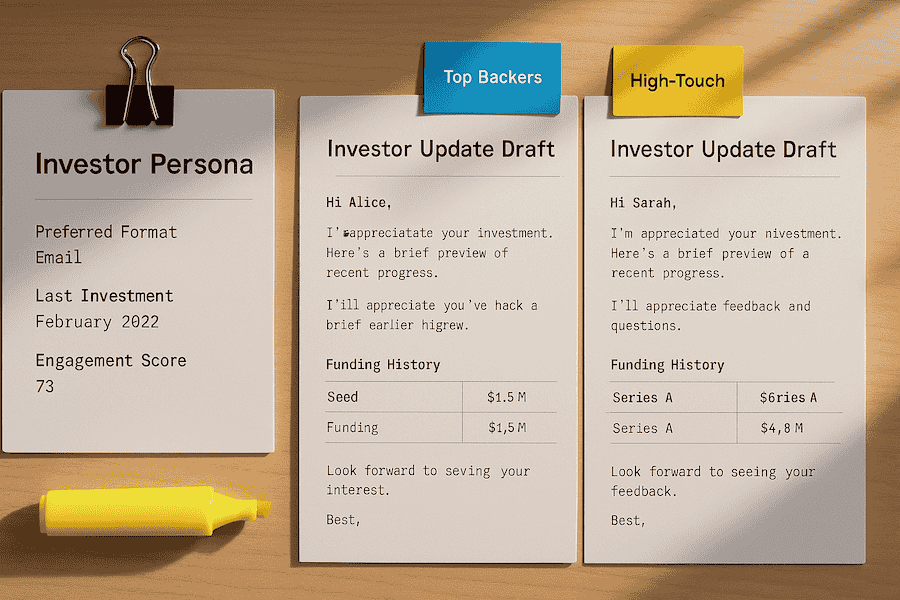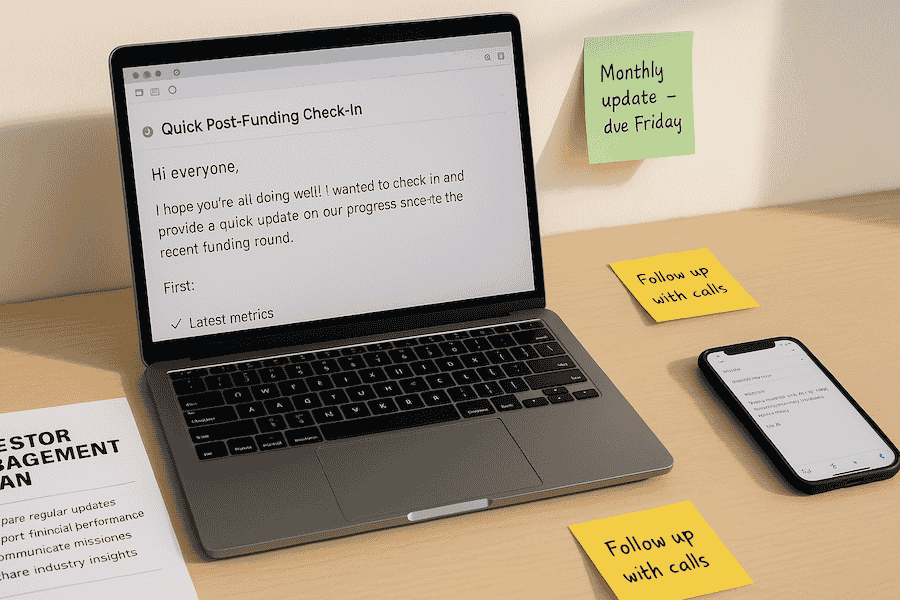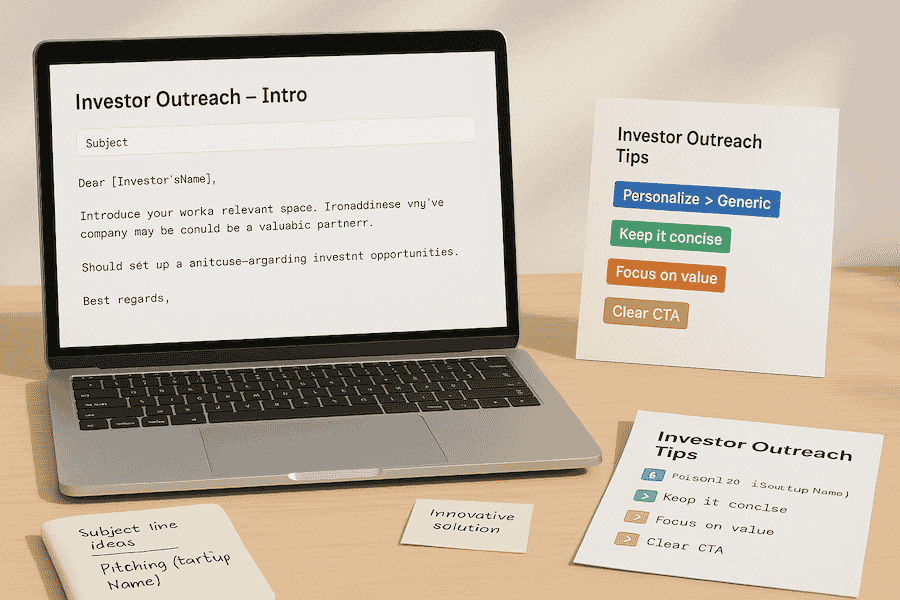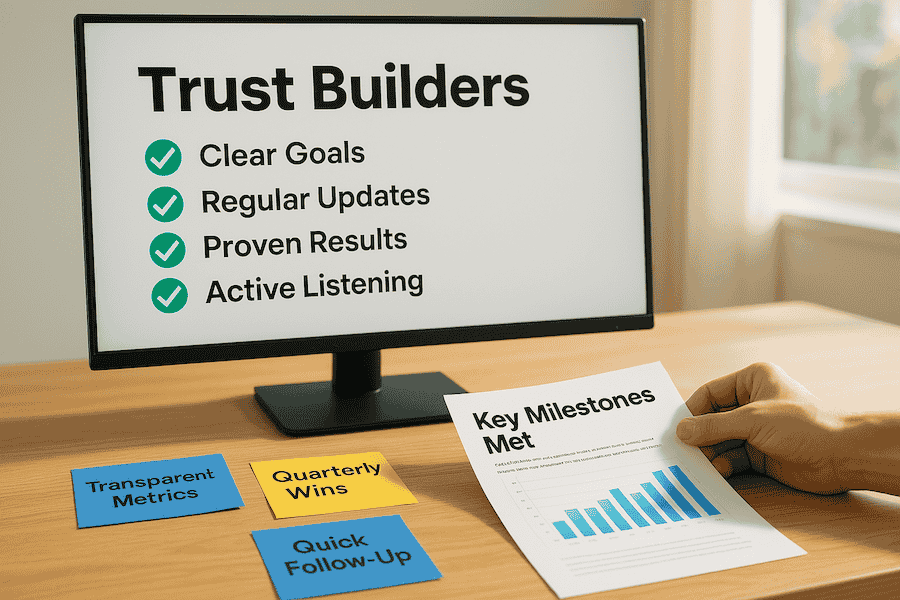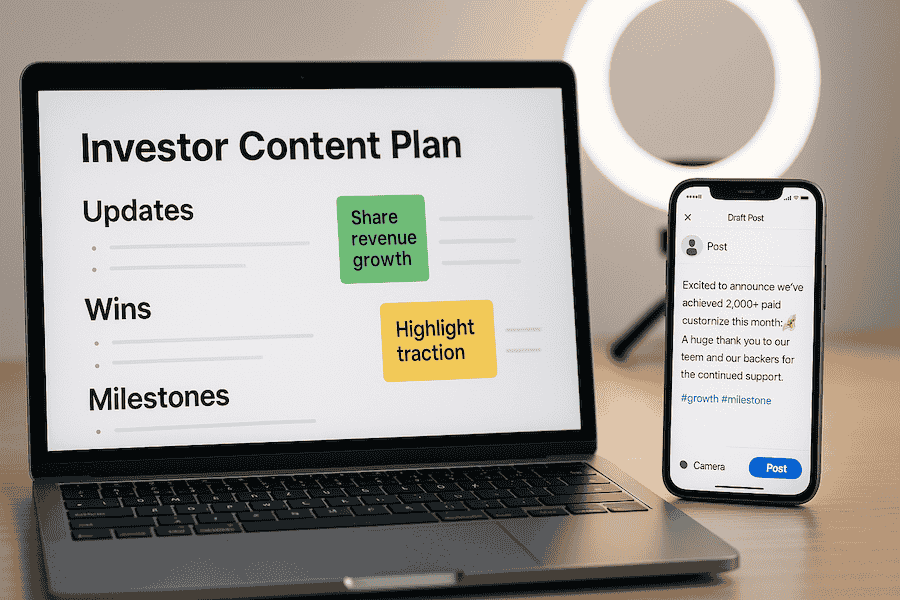Effective communication with investors is more than just sharing updates—it’s about creating a connection that resonates. Personalizing your outreach allows you to stand out in a crowded market, ensuring your messages are not only heard but remembered. By tailoring your communication to the unique preferences and priorities of your investors, you demonstrate a deeper understanding of their needs, fostering trust and long-term relationships.
Avoiding common mistakes in investor communication is key to ensuring messages resonate effectively and build credibility. For example, generic updates or impersonal messaging can dilute your impact and hinder engagement.
This blog will explore how personalized communication can enhance your investor relationships, offering actionable insights to help you refine your approach.
The Power of Personalized Investor Communication
Tailored communication with investors is essential for creating strong, lasting relationships. Here are the key points:
- Personalized Messaging:
Custom messages foster trust and help startups stand out in a market filled with generic pitches. - Addressing Investor Needs:
By focusing on individual investor preferences and challenges, companies create connections that go beyond the initial interaction. - Differentiation in a Crowded Market:
Unique, customized outreach demonstrates a deeper understanding of investor goals, setting your startup apart from the noise. - Building Credibility and Trust:
Personalized communication strengthens investor relationships, as investors are more likely to respond positively when they feel valued and understood. - Long-Term Partnerships:
Consistent tailored messaging lays the foundation for enduring partnerships based on collaboration and transparency. - Actionable Strategies Ahead:
Future insights will provide a roadmap for leveraging investor profiles and data to craft impactful, personalized communications.
The Importance of Investor Personalization
Tailoring communication to meet the unique interests of investors is more than a strategy—it’s a necessity. Personalized outreach ensures that investors feel valued and heard, fostering stronger engagement and long-term commitment. When communication aligns with individual preferences, it transforms a generic message into one that resonates deeply.
Personalization builds trust by addressing specific concerns. For example, targeted messages that focus on an investor’s priorities—whether it’s financial growth, sustainability, or innovation—demonstrate authenticity and credibility. This approach not only grabs attention but also encourages investors to remain actively involved in your vision.
Moreover, personalized communication strengthens relationships over time. By consistently addressing investor-specific interests, businesses can create a sense of partnership rather than mere transactional exchanges. To learn more about delivering updates that keep investors informed and engaged, check out our guide on how to write investor updates.
Incorporating personalization into your investor communication strategy is not just about standing out; it’s about building a foundation for mutual success.
Enhancing Investor Relationships Through Personalization
Personalized investor communication can transform relationships into enduring, mutually beneficial partnerships. Here’s how:
- Target Investor Priorities:
Craft messages that address specific investor interests—be it financial growth, sustainability, or innovation—to demonstrate authenticity and build credibility. - Foster Long-Term Trust:
Consistently tailor your updates and outreach to create a partnership-oriented relationship rather than a mere transactional exchange. - Drive Active Engagement:
Personalized communication encourages investors to participate beyond funding by sharing insights, offering guidance, and connecting you with valuable networks. - Attention to Detail:
Even minor touches—such as addressing individual concerns or celebrating milestones—can significantly enhance the investor experience. - Build a Foundation for Mutual Success:
By aligning your narrative with investor values and providing customized updates, you establish a solid base for long-term collaboration and growth.
These actions show attentiveness and reinforce the idea that investors are more than financial backers—they are integral partners in success. For businesses seeking to deepen these connections, understanding how to manage investor expectations is equally critical. Effectively managing investor expectations can prevent misunderstandings and strengthen long-term partnerships.
Ultimately, personalization is a powerful tool for enhancing investor ties. By prioritizing tailored communication, businesses can unlock deeper trust, sustained engagement, and enduring loyalty, ensuring investors remain committed allies in their journey.
Overcoming Communication Personalization Challenges
Tailoring communication for investors often feels like a balancing act between quality and efficiency. Limited time and resources can make personalization seem unattainable for startups, but modern solutions are simplifying the process. AI-driven tools, for instance, can automate repetitive tasks while ensuring messages remain relevant and engaging. By analyzing data patterns, these tools craft personalized outreach that resonates with investors without draining your team’s bandwidth.
Another key strategy is maintaining clear and organized data. When startups streamline investor profiles and communication histories, they can quickly access insights to inform tailored messaging. Templates also play a vital role in scaling personalization efforts. With pre-designed frameworks, teams can adapt messages to individual investors without starting from scratch each time.
For startups aiming to optimize their outreach, AI-driven email personalization tools can be particularly effective. As highlighted in our article on the best practices for emailing investors, these strategies ensure communication remains impactful even under tight constraints.
Fundamentals of Effective Investor Communication
Clear and purposeful communication is the cornerstone of building trust with investors. Using plain language and avoiding industry jargon ensures clarity, making it easier for investors to understand your message and engage confidently. Transparency is equally critical—it fosters long-term relationships by demonstrating integrity and openness in sharing both successes and challenges.
Tailoring your communication to different investor segments is another vital principle. Not all investors have the same priorities or levels of expertise. By segmenting your audience, you can craft nuanced messages that resonate with their unique needs and expectations. For instance, institutional investors may require detailed financial reports, while individual investors might prefer simplified updates.
The foundation of personalized communication begins with well-planned investor outreach strategies that foster trust and long-term relationships. These strategies help you build connections that are both meaningful and sustainable.
Strategies for Effective Investor Communication
Maintaining strong investor relationships requires a proactive approach to communication. Implementing investor communication best practices ensures transparency, builds trust, and fosters engagement. Below are three actionable strategies to optimize outreach.
1. Prioritize Regular and Transparent Updates
The importance of transparency with investors cannot be stressed enough. Consistent updates are the cornerstone of investor confidence. Share financial reports, market insights, and company milestones at regular intervals to keep investors informed. Use clear, concise language to ensure accessibility for all stakeholders. Whether through quarterly newsletters or investor meetings, maintaining a predictable communication cadence reassures investors of your commitment to transparency.
2. Prepare for Crisis Communication
Sensitive situations demand a well-structured crisis communication plan. Anticipate potential challenges and outline clear protocols for addressing investor concerns during difficult periods. Focus on delivering timely updates, acknowledging challenges, and presenting actionable solutions. This approach minimizes uncertainty and reinforces trust, even in challenging circumstances.
3. Embrace Digital Engagement Channels
Digital tools offer dynamic ways to connect with investors. Platforms like webinars, interactive dashboards, and social media provide opportunities for real-time engagement. Consider hosting virtual Q&A sessions or utilizing investor portals to share updates and collect feedback. These methods not only enhance accessibility but also foster a sense of community among stakeholders.
By implementing these strategies, businesses can strengthen investor relationships and ensure consistent engagement.
Integrating D2I Marketing for Enhanced Communication
Direct-to-Investor (D2I) marketing leverages personalized outreach and storytelling to transform investor engagement.
- Personalized Engagement:
D2I marketing blends tailored outreach with compelling storytelling to align communication strategies with investor expectations for clarity and relevance. - Technological Alignment:
Selecting the right tools ensures that your messaging strategy meets investor needs, making every communication clear and targeted. - Compelling Narrative:
Crafting a narrative that resonates with investor values is key—Altech’s approach, for example, generated $15.8M raised, 127K hub views, and 19.4K visits through consistent, personalized updates. - Real-World Success:
Examples like Race, which raised an impressive $29.7M through transparent reporting, highlight how effective communication can drive investor interest and visibility. - Fostering Connections:
D2I marketing isn’t just about reaching investors; it’s about building meaningful relationships that inspire confidence and deliver measurable results.
How To Follow-Up
Following up with investors is as important as the first meeting. Clear and friendly messages help build trust. Each message should be short and genuine. Your goal is to remind them of your discussion and show that you value their input.
Step-by-Step Approach
Effective follow-ups after investor meetings can build lasting relationships. Here’s how:
- Start with a Thank-You:
Send a brief thank-you note soon after the meeting, mentioning a specific detail from your conversation to show genuine attention. - Share Relevant Updates:
In your next message, include any updates that relate to your earlier discussion—even a small piece of news can keep the connection fresh. - Keep It Simple:
Use plain language with short sentences and avoid complex words to ensure clarity. - Plan a Natural Follow-Up Schedule:
Check in after a week or two with a simple message asking if they have any questions or need more details. - Sign Off Politely:
Always conclude your follow-ups with a courteous thank-you to reinforce the positive connection.
These steps help create room for honest conversations, demonstrate reliability, and build the foundation for long-term investor bonds.
Conclusion
Tailored communication strategies are the cornerstone of successful investor outreach. By focusing on personalized messaging, utilizing innovative tools, and embracing D2I marketing, startups can create impactful connections that resonate with investors. These approaches not only enhance engagement but also foster trust-based relationships that are essential for long-term collaboration.
The benefits of customized outreach extend beyond securing funding; they establish credibility and demonstrate a commitment to understanding investor needs. As you refine your communication processes, consider how these strategies can transform your approach to fundraising.
To truly elevate your investor communication, we at Qubit Capital offer our Investor Outreach service. Reach out to us today to secure the right investments and build lasting partnerships.
Key Takeaways
- Personalized investor communication fosters trust, engagement, and strategic partnerships.
- Utilizing tools that enable tailored messaging through CRM, dynamic templates, and regular updates.
- Clear, consistent updates and a well-prepared crisis plan are essential to maintain investor confidence.
- Integrating D2I marketing enhances your narrative, combining technology and storytelling for better engagement.
- Overall, effective personalization differentiates your startup and drives improved investor outcomes.




